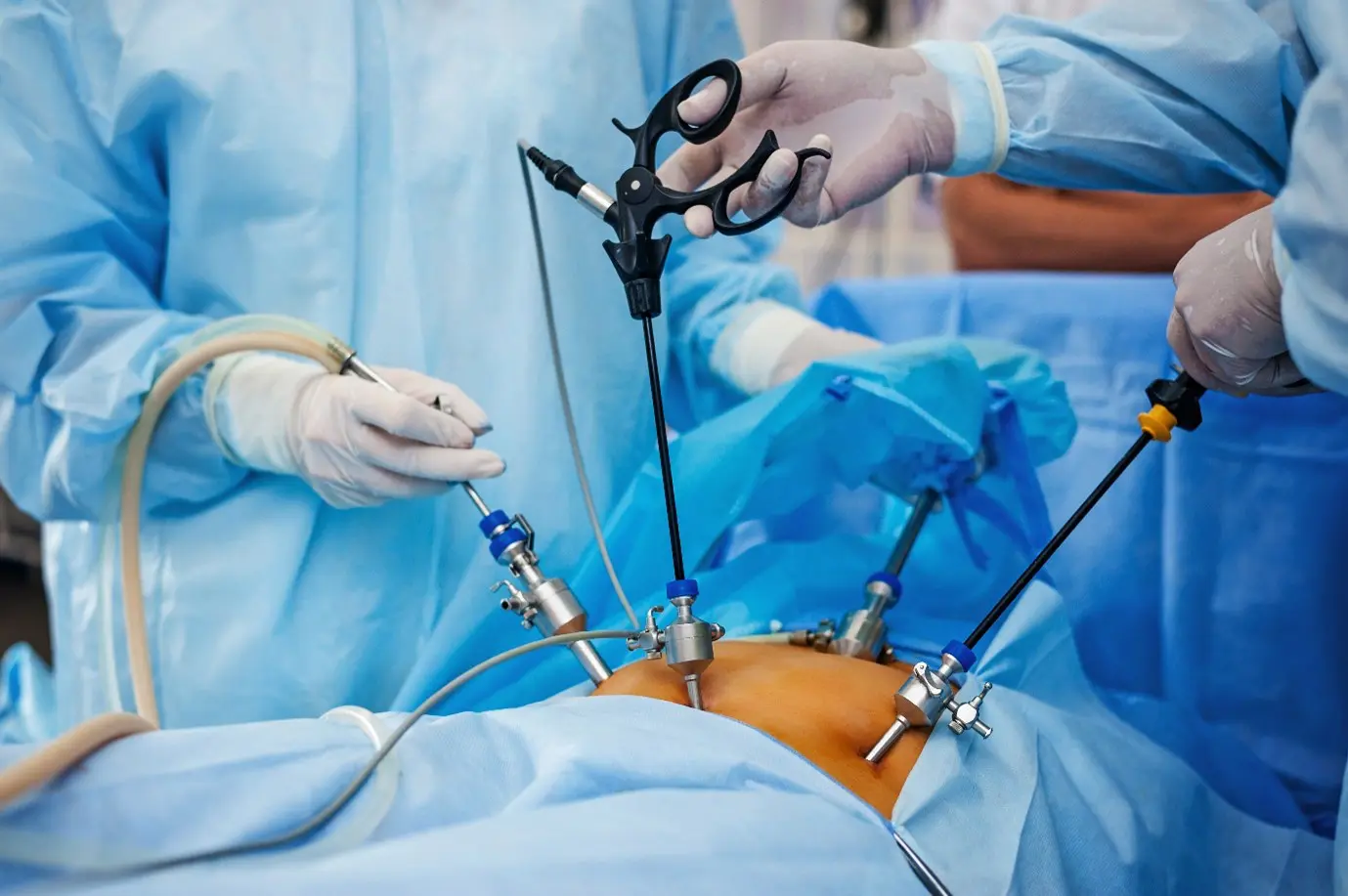Minimally Invasive Gynecologic Surgery (MIGS) has come a long way since it was first performed fifty years ago. Today, all gynecologic surgeries can be done with MIGS.
What is Minimally Invasive Gynecologic Surgery (MIGS)?
Unlike an ‘open’ surgery, where one large incision is made, MIGS is done without any incision, or with only a few minor incisions of 0.5 to 2.0 cms. Through these openings, the MIGS instrument, a laparoscope or endoscope is inserted. These instruments have a tiny digital video camera and a light, which enable the operating space inside the body to be seen on monitors around the operating table. The monitors give a high-resolution, magnified 3D image of the operating space, to ensure surgeons can precisely cut and stitch using the instruments. A Hysteroscope is inserted through the cervix to access the uterus without incisions.
Benefits of MIGS:
The benefits of MIGS are smaller incisions, less blood loss, fewer blood transfusions, less pain, improved outcomes, less risk of infection or other complications, shorter or no hospital stay, reduced scar tissue, faster recovery and return to daily activities.
READ: Minimally Invasive Surgery (Benefits of Laparoscopic Surgery)
Risks and Complications of MIGS:
Laparoscopy is a complex technique. It is not risk-free, though its risks and complications are fewer than other major procedures. Perioperative and postoperative complications frequency is 4% to 16%. Major complications frequency is 1.7% to 1.9%.
The main complications are hemorrhage, infection, thromboembolism, and visceral (stomach, bladder, uterus, or rectum) damage and vascular injuries.
Experienced surgeons have a significantly smaller number of organ injuries and intraoperative complications requiring laparotomy (opening of abdomen).
Procedures Undertaken with MIGS:
MIGS can be used for hysterectomy (remove all or a part of the uterus), myomectomy (removal of uterine fibroids), endometriosis, adenomyosis, gynecologic cancer (cervical, endometrial and ovarian cancer), ectopic pregnancy, menorrhagia, and peri-menopausal or post-menopausal bleeding, dysmenorrhea (painful period cramps), pelvic pain and pelvic inflammatory disease (PID), polyps, adhesions, cysts, abscess, pelvic congestion syndrome, teratomas/dermoids, pelvic organ prolapse and Essure removal.
Just because every gynecologic surgery can be done with MIGS, does not mean that it should be done with MIGS. The surgeon must evaluate the patient to ascertain whether the optimal surgery for her is MIGS or an “open” surgery. Trust your surgeon and follow the advice given.
For more details:
Dr. Prof. Sadhna Kala
MBBS, MS, FICOG, FACS (USA)
Senior Consultant Obstetrics & Gynecology
Apol lo Cradle & Children’s Hospital – Nehru Place – New Delhi
For Appointment, Call 9958295296

